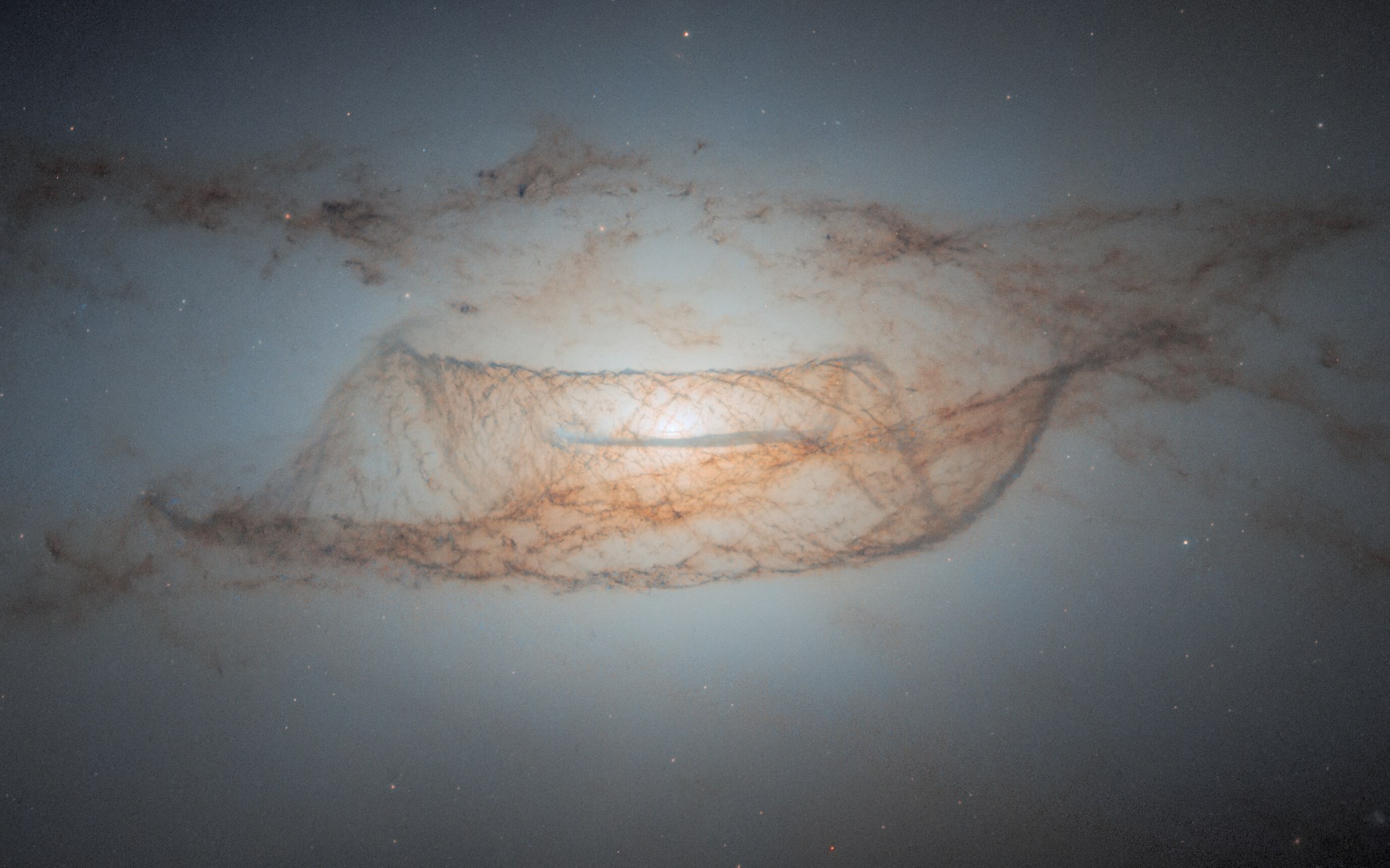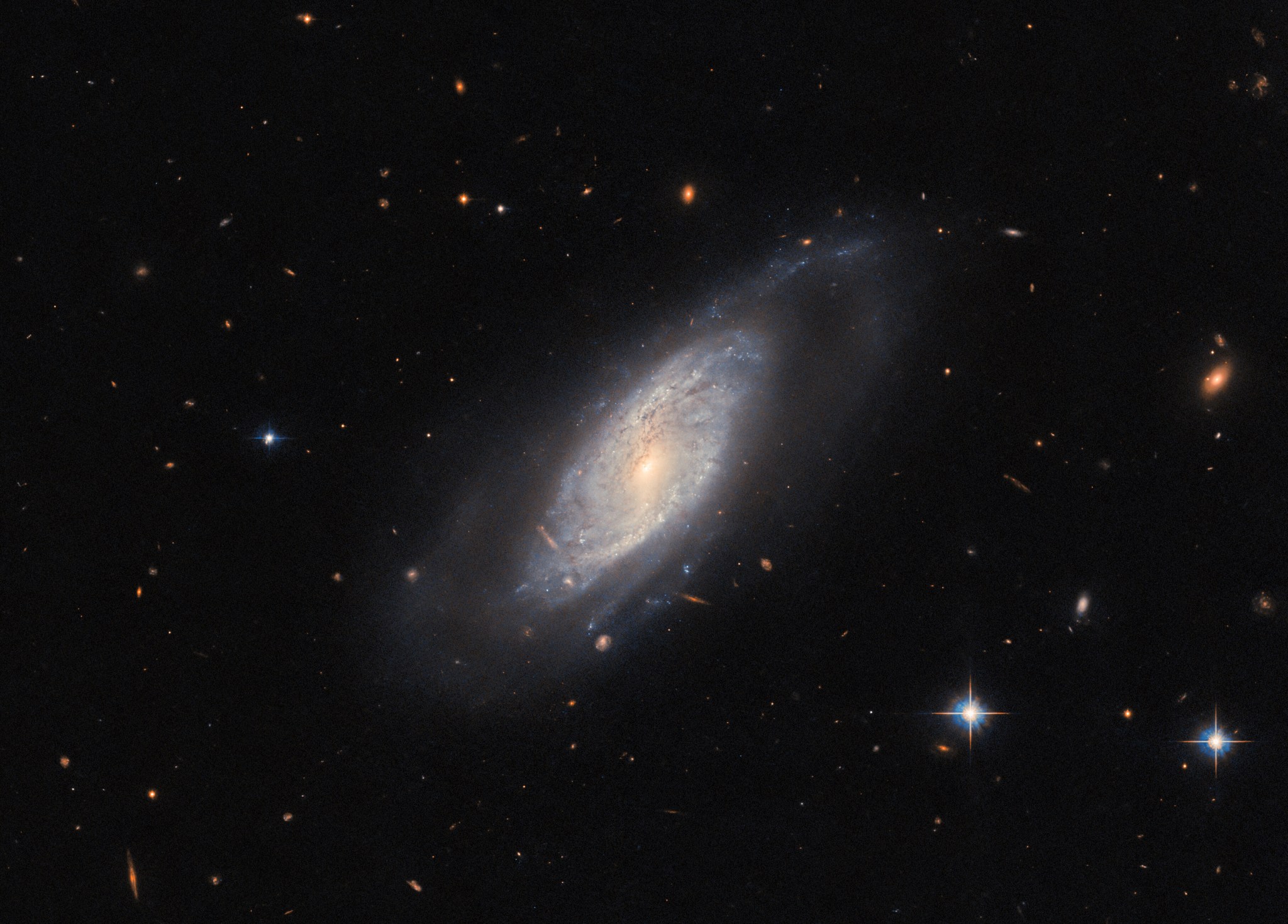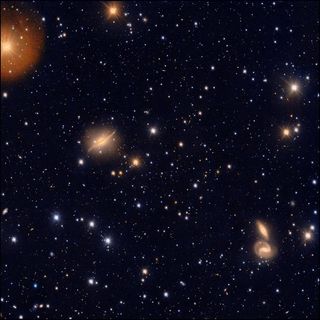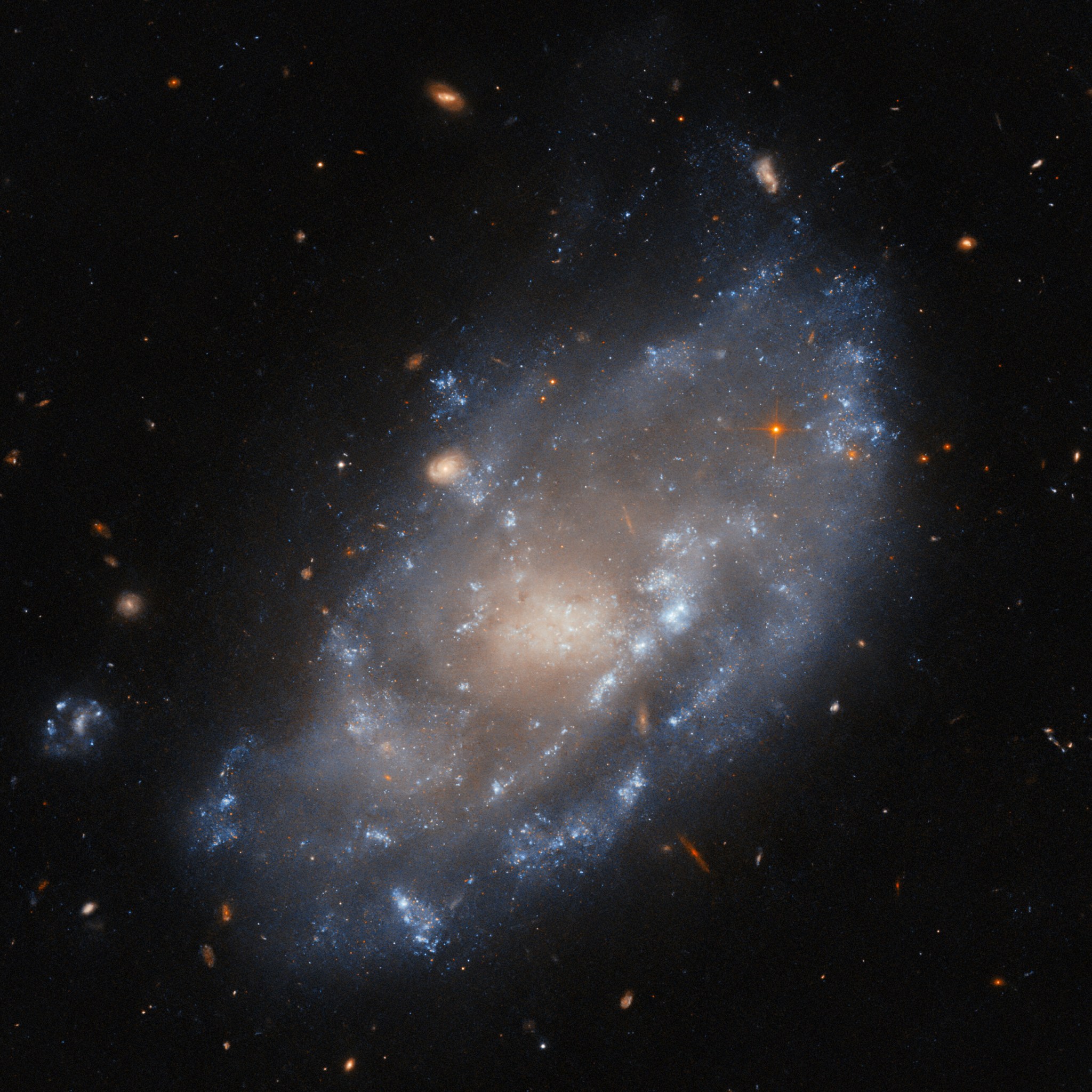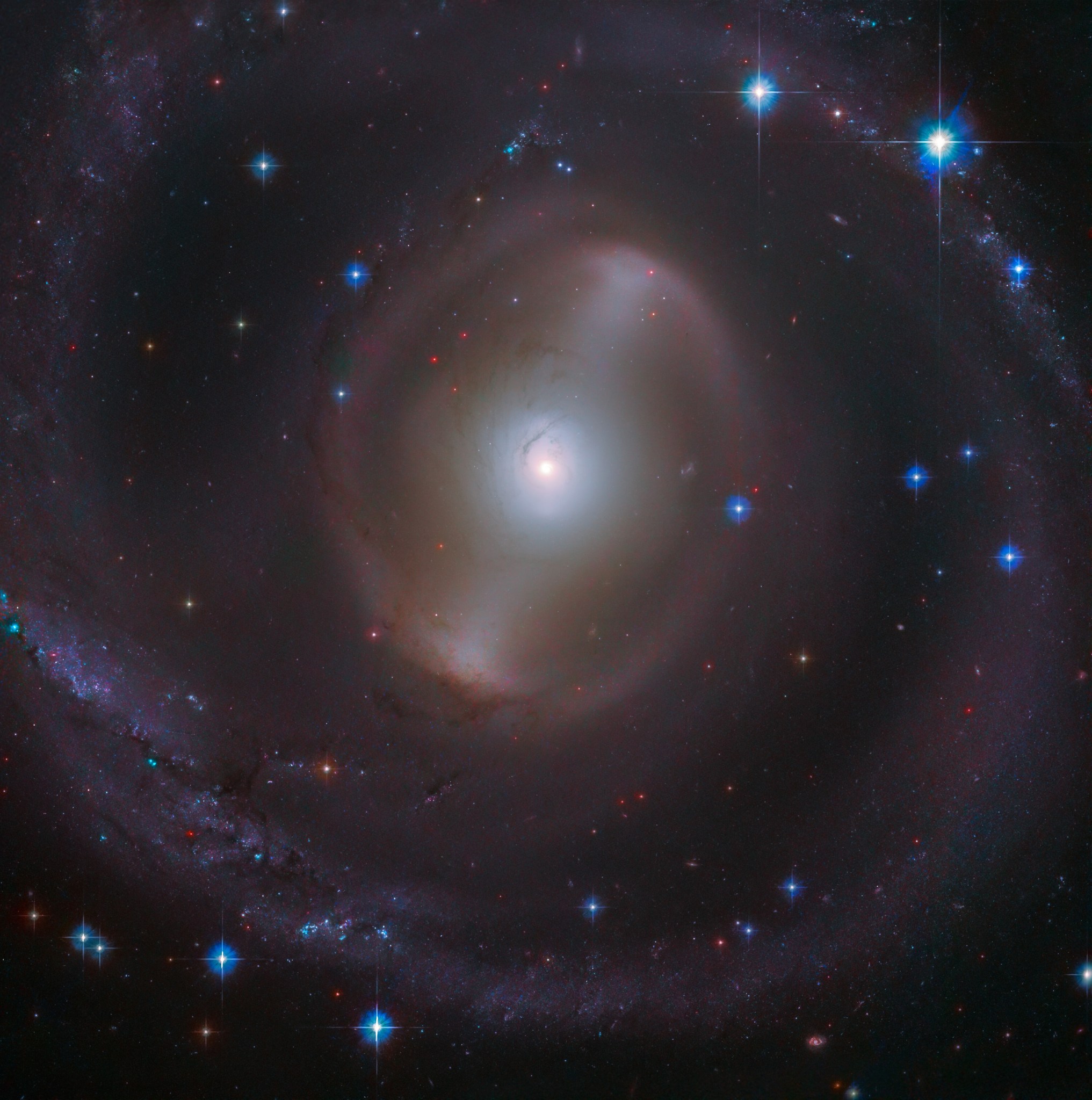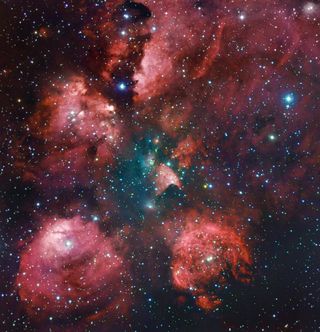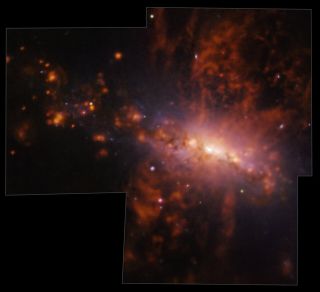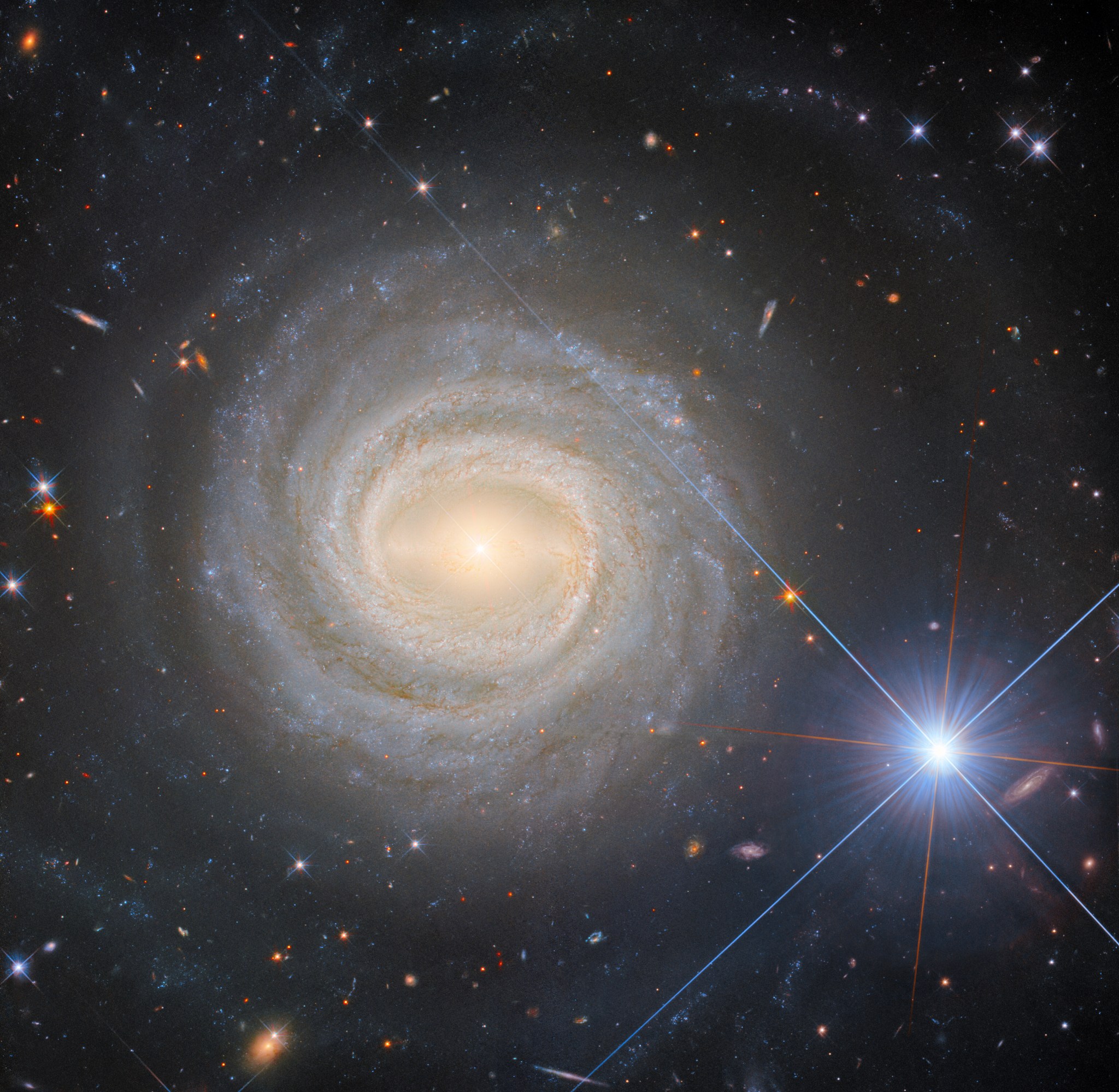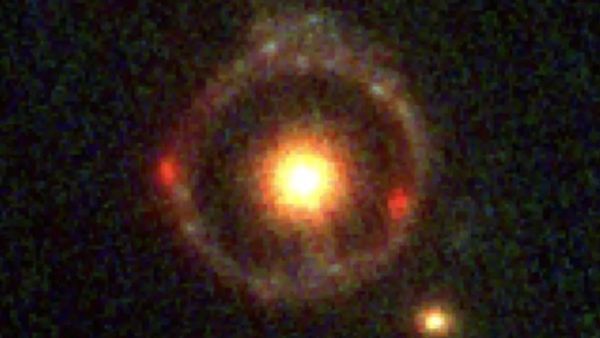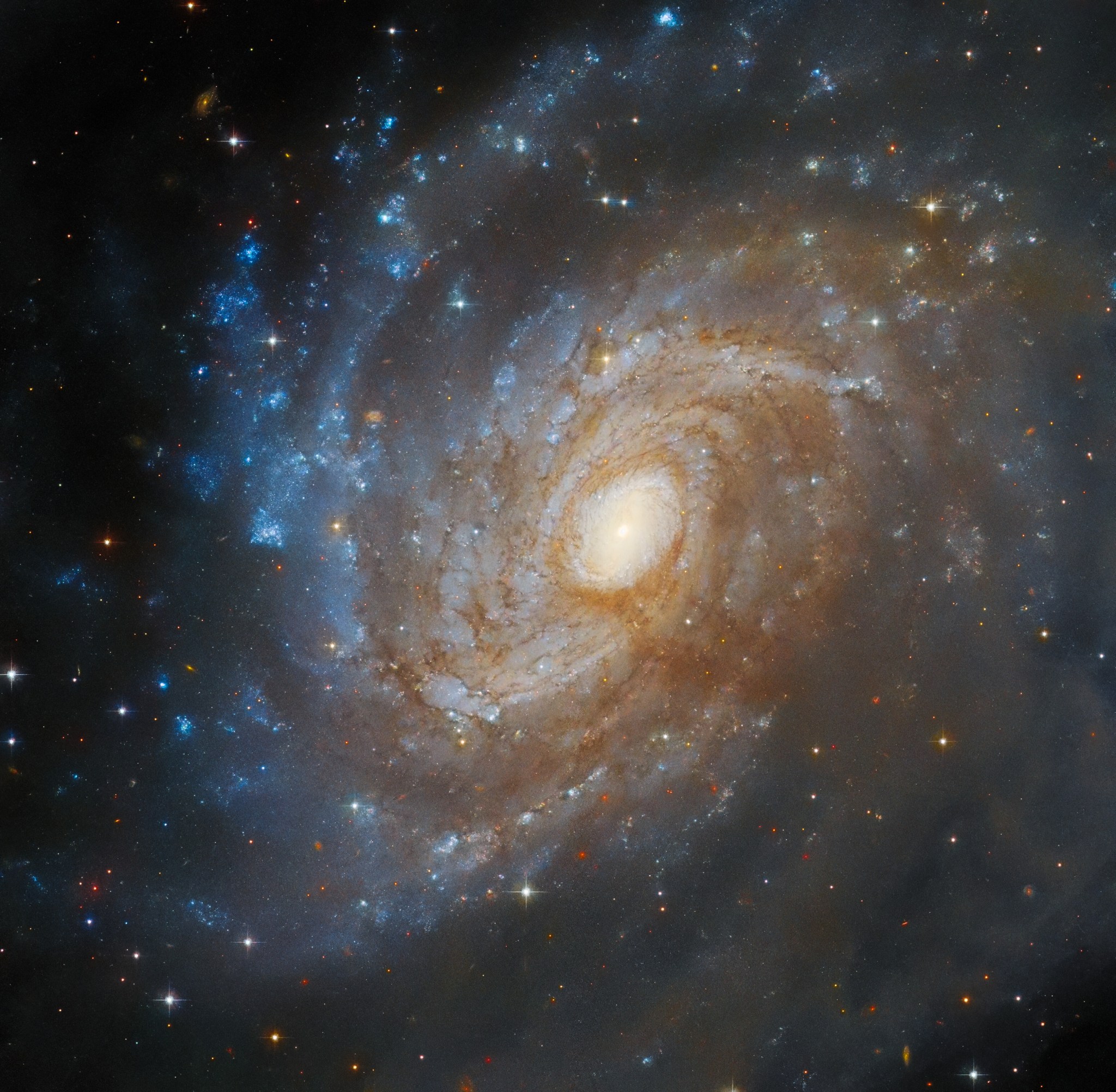2 min read Hubble Views Cosmic Dust Lanes This Hubble Space Telescope image showcases a nearly edge-on view of the lenticular galaxy NGC 4753. ESA/Hubble & NASA, L. Kelsey Featured in this new image from the NASA/ESA Hubble Space Telescope is a nearly edge-on view of the lenticular galaxy NGC 4753. Lenticular galaxies have an elliptical shape and ill-defined spiral arms. This image is the object’s sharpest view to date, showcasing Hubble’s incredible resolving power and ability to reveal complex dust structures. NGC 4753 resides around 60 million light-years from…
Read MoreTag: Galaxies
Hubble Glimpses a Star-Forming Factory
2 min read Hubble Glimpses a Star-Forming Factory This image from the NASA/ESA Hubble Space Telescope highlights the spiral galaxy UGC 9684. The celestial object showcased in this image from the NASA/ESA Hubble Space Telescope is the spiral galaxy UGC 9684, which lies around 240 million light-years from Earth in the constellation Boötes. This image shows an impressive example of several classic galactic features, including a clear bar in the galaxy’s center, and a halo surrounding its disk. The data for this Hubble image came from a study of Type-II…
Read MoreWorld’s largest visible light telescope spies a galaxy cluster warping spacetime
When astronomers look at galaxies, they’re often conducting a sort of archaeology. Well, cosmic archeology. Basically, by examining what a galaxy looks like and how it interacts with its nearest galactic neighbors, it’s possible to reconstruct that galaxy’s history. And one tool that astronomers can use for such work is the VLT Survey Telescope (VST), the world’s largest visible-light telescope. Now, the VST has released a triptych of images depicting some of those distant galaxies necessary in uncovering galactic pasts. One image depicts ESO 510-G13, a galaxy 150 million light-years…
Read MoreHubble Hunts Visible Light Sources of X-Rays
2 min read Hubble Hunts Visible Light Sources of X-Rays This NASA/ESA Hubble Space Telescope image features the dwarf galaxy IC 776. ESA/Hubble & NASA, M. Sun This NASA/ESA Hubble Space Telescope image features the dwarf galaxy IC 776. This swirling collection of new and old stars is located in the constellation Virgo, in the Virgo galaxy cluster, 100 million light-years from Earth. Although IC 776 is a dwarf galaxy, it’s also classified as a SAB-type or ‘weakly barred’ spiral. This highly detailed Hubble view demonstrates that complexity. IC 776…
Read MoreHubble Spots a Magnificent Barred Galaxy
This NASA/ESA Hubble Space Telescope images showcases the galaxy NGC 2217. ESA/Hubble & NASA, J. Dalcanton; Acknowledgement: Judy Schmidt (Geckzilla) The magnificent central bar of NGC 2217 (also known as AM 0619-271) shines bright in the constellation of Canis Major (The Greater Dog), in this image taken by the NASA/ESA Hubble Space Telescope. Roughly 65 million light-years from Earth, this barred spiral galaxy is a similar size to our Milky Way at 100,000 light-years across. Many stars are concentrated in its central region forming the luminous bar, surrounded by a set of tightly wound spiral arms.…
Read MoreBuried in the Cat’s Paw Nebula lies one of the largest space molecules ever seen
Scientists have discovered a hitherto unknown space molecule while investigating a relatively nearby region of intense star birth, a cosmic spot about 5,550 light-years away. It’s part of the Cat’s Paw Nebula, also known as NGC 6334. The team, led by Zachary Fried, a graduate student at the Massachusetts Institute of Technology (MIT), examined a section of the nebula known as NGC 6334I with the Atacama Large Millimeter/submillimeter Array (ALMA). This revealed the presence of a complex molecule known as 2-methoxyethanol, which had never been seen before in the natural world, though…
Read MoreCosmic fountain is polluting intergalactic space with 50 million suns’ worth of material
Tremendous explosions in a galaxy close to the Milky Way are pouring material equivalent to around 50 million suns into its surroundings. Astronomers mapped this galactic pollution event in high resolution, obtaining important hints about how the space between galaxies becomes filled with chemical elements that eventually become the building blocks of new stars. The findings came about when the international team studied NGC 4383, a spiral galaxy in the Coma Berenices constellation, using a Very Large Telescope (VLT) instrument called the Multi Unit Spectroscopic Explorer (MUSE). Located around 62…
Read MoreHubble Captures a Bright Galactic and Stellar Duo
2 min read Hubble Captures a Bright Galactic and Stellar Duo This image from the NASA/ESA Hubble Space Telescope features the barred spiral galaxy NGC 3783. ESA/Hubble & NASA, M. C. Bentz, D. J. V. Rosario This image from the NASA/ESA Hubble Space Telescope features NGC 3783, a bright barred spiral galaxy about 130 million light-years from Earth that also lends its name to the eponymous NGC 3783 galaxy group. Like galaxy clusters, galaxy groups are aggregates of gravitationally bound galaxies. Galaxy groups, however, are less massive and contain fewer members than galaxy…
Read MoreExotic ‘Einstein ring’ suggests that mysterious dark matter interacts with itself
A fresh analysis of a remarkably massive yet compact galaxy from the early universe suggests that dark matter interacts with itself. The galaxy, JWST-ER1, which formed just 3.4 billion years after the Big Bang, was first spotted last October in images snapped by NASA’s James Webb Space Telescope (JWST). At over 17 billion light-years from Earth, JWST-ER1g is the farthest-ever example of a perfect “Einstein ring” — an unbroken circle of light around the galaxy, a result of light rays from a distant, unseen galaxy being bent due to the…
Read MoreHubble Spots a Galaxy Hidden in a Dark Cloud
2 min read Hubble Spots a Galaxy Hidden in a Dark Cloud This Hubble image features the spiral galaxy IC 4633. ESA/Hubble & NASA, J. Dalcanton, Dark Energy Survey/DOE/FNAL/DECam/CTIO/NOIRLab/NSF/AURA; Acknowledgement: L. Shatz The subject of this image taken with the NASA/ESA Hubble Space Telescope is the spiral galaxy IC 4633, located 100 million light-years away from us in the constellation Apus. IC 4633 is a galaxy rich in star-forming activity and also hosts an active galactic nucleus at its core. From our point of view, the galaxy is tilted mostly…
Read More